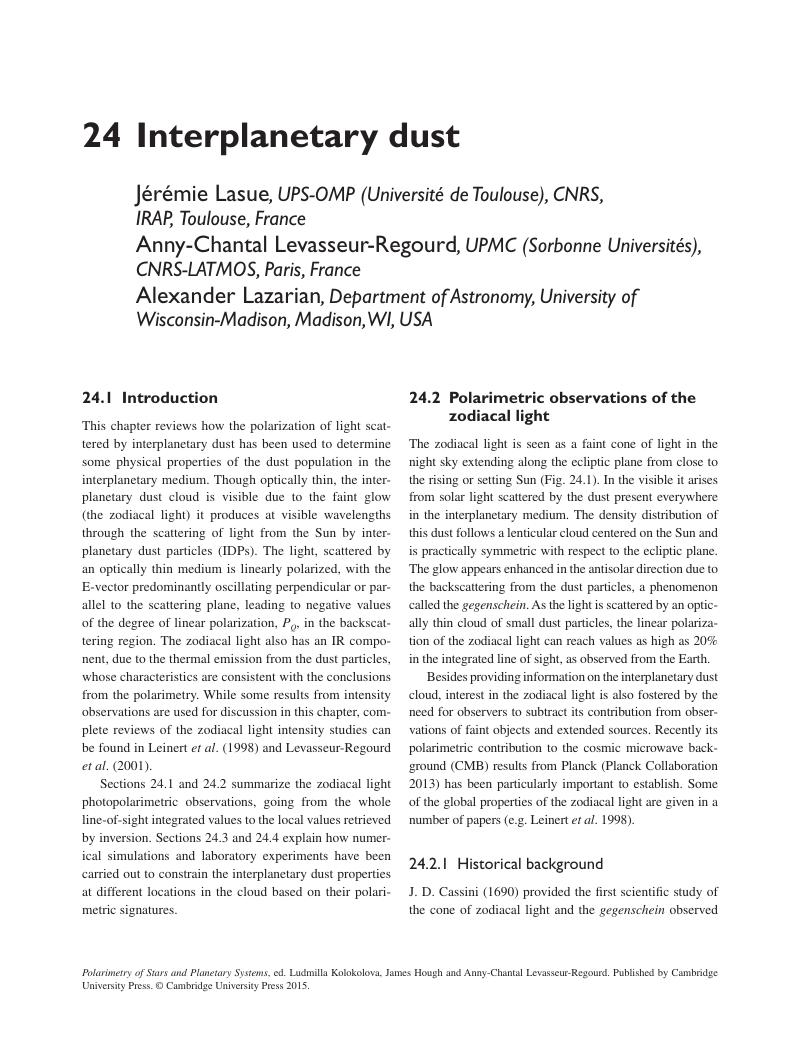Book contents
- Half title page
- Title page
- Copyright page
- Dedication
- Contents
- Contributors
- I Introduction
- II Theory, instrumentation, and laboratory studies
- III Stars and their environment
- IV Solar system
- 16 The Sun
- 17 Terrestrial planets
- 18 The Moon
- 19 Gas giant planets, Saturn’s rings, and Titan
- 20 Icy moons of the outer planets
- 21 Asteroids
- 22 Comets
- 23 Transneptunian objects and Centaurs
- 24 Interplanetary dust
- V Exoplanets and exobiology
- Book part
- Index
- References
24 - Interplanetary dust
from IV - Solar system
Published online by Cambridge University Press: 05 May 2015
- Half title page
- Title page
- Copyright page
- Dedication
- Contents
- Contributors
- I Introduction
- II Theory, instrumentation, and laboratory studies
- III Stars and their environment
- IV Solar system
- 16 The Sun
- 17 Terrestrial planets
- 18 The Moon
- 19 Gas giant planets, Saturn’s rings, and Titan
- 20 Icy moons of the outer planets
- 21 Asteroids
- 22 Comets
- 23 Transneptunian objects and Centaurs
- 24 Interplanetary dust
- V Exoplanets and exobiology
- Book part
- Index
- References
Summary

- Type
- Chapter
- Information
- Polarimetry of Stars and Planetary Systems , pp. 419 - 436Publisher: Cambridge University PressPrint publication year: 2015
References
- 4
- Cited by



